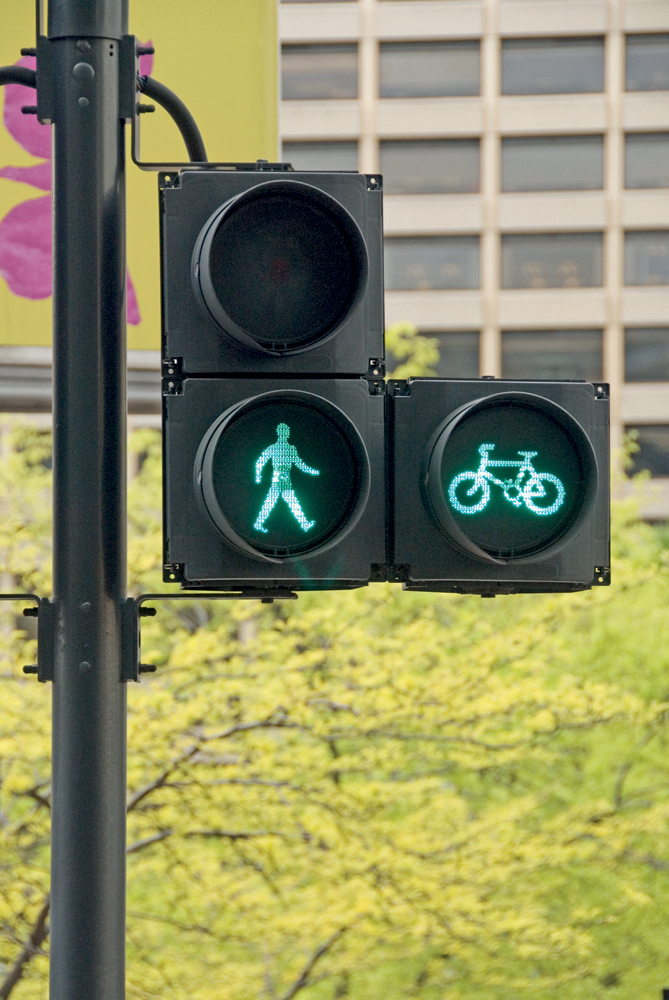
Richard Cuerden considers how many of the technologies developed as part of a move toward autonomous vehicles are already being deployed as ADAS improve road safety.
The drive to create autonomous vehicles has caused a re-evaluation of what is needed to safely navigate today’s roads and the development of systems that can replace the driver in many scenarios. However, many manufacturers are not waiting for ‘tomorrow’ and are already incorporating these systems in their new cars as Advanced Driver Assistance Systems (ADAS) to improve road safety today.
ADAS features that aid drivers in the driving process are becoming more prevalent on the roads of Europe and elsewhere, especially as part of the drive towards creating smarter, connected, more efficient and safer transport networks. Current vehicle ADAS features are designed to help the driver with longitudinal and lateral guidance and can intervene in certain emergency scenarios to prevent collisions or to mitigate their consequences.
However, today’s technologies only offer partial automated functionality and require permanent driver supervision. As more ADAS features are incorporated into cars on the road we will learn how they react in certain scenarios, and this evidence will be part of the development process for the next generation of connected and automated vehicles. Looking towards highly automated vehicles that can drive themselves under certain conditions, there are still gaps in our knowledge and challenges, such as how an automated vehicle can safely hand control back to the driver? Will they be ready to resume control and how long will this process take? Research by many organisations, including
AEB – Time to stop?
One system that is already becoming commonplace on Europe’s roads is autonomous emergency braking (AEB), which is designed to improve safety in three ways. Firstly, AEB helps to avoid accidents by identifying critical situations early and warning the driver. Secondly, it can reduce the severity of unavoidable crashes by applying the brakes to lower the impact speed and, in some cases, by preparing the vehicle and restraint systems for impact.
AEB systems use either sensors or cameras or a combination of these devices to identify a potential collision. The vehicle’s electronics then process this information, (taking into account the knowledge of the vehicle’s speed, trajectory and time to impact) to determine the best course of action: either alert the driver to act; or apply the brakes autonomously.
Current AEB technologies are not capable of identifying and reacting to all potential collision scenarios. First generation systems were primarily effective at preventing shunt impacts between vehicles while the new generation is capable of detecting stationary and moving vehicles, pedestrians and other objects. Vehicle manufacturers are increasingly incorporating the more effective AEB as ADAS, without waiting for a driverless solution.
In Europe AEB is currently only mandated for larger vehicles, such as trucks. However, the underlying technology and software is equally applicable to all sizes and types of vehicle and we hope will become standard rather than optional on all new production vehicles within the next few years. AEB, especially pedestrian and cyclist-capable AEB, will significantly reduce the number of fatal and serious injury collisions that take place. TRL is investigating the potential costs and benefits associated with regulating this technology for passenger cars on behalf of the European Commission.
Design opportunity
Progressing towards higher levels of both autonomy and electrification presents challenges but it also offers up opportunities, particularly from a design point of view.For example, future vehicles will feature a wide variety of new gadgets and technology for which safety engineers will need to account. This means that screens should either be manufactured to be ‘impact-friendly’, through utilising new technologies such as spray–on liquid crystals. Alternatively, the whole cabin will be designed to protect people from potential collision injuries. The sensors and cameras used for ADAS and connected vehicles (and to navigate autonomous vehicles) will provide collision warnings and this data can help inform and actively adapt the performance of seat belts and airbags.
The ultimate aim is to optimise vehicles in terms of impact characteristics and the specific needs of people both inside and outside of the vehicle. Other technologies, such as pre-crash, fold-away mechanisms and advanced airbag designs will be able to physically remove potential hazards, for example, dashboard-mounted screens, milliseconds before an impact.
The additional pre-collision alert data is one of many things that would improve safety for those outside of the vehicle as well as within it. Therefore, to reduce road casualties further, much more must be done to improve vehicle safety design for vulnerable road users, both preventing collisions and reducing the risk of injury when they do occur.
If safety is given a sufficiently high priority early enough in the design stage, then we could see large changes in safety system performance. This also raises the potential to enable radical exterior design changes, which would ensure more forgiving structures in the event of impacts with pedestrians and cyclists, without compromising vehicle user safety.
Driver monitoring
It’s not just the systems monitoring activity outside the vehicle that are going to prove vital, but also those looking at what the vehicle’s occupants are doing, mainly the driver. For example, seat belt reminders are an essential feature on any vehicle. It may sound a little bit ‘Big Brother’, but the statistics show that about 30% of people who die on the road are not wearing a seat belt – and half of these people would survive if they wore seat belts on every journey – then a simple reminder becomes important.
Although some of these reminders could be implemented straight away, there is arguably a need for a more sophisticated system of driver monitoring. As vehicles evolve and begin to drive themselves, at least on some journeys, there needs to be considerable work done on the process in which the vehicle passes control back to the driver.
For example, current autonomous systems in vehicles require the driver to leave their hands on the steering wheel so they are always in control of the vehicle if needed. But what systems do the vehicles need to have when we reach a level of autonomy where the driver can do other tasks, such as checking email or watching a TV show?
There needs to be a very carefully thought-out process that the vehicle goes through when preparing to hand control back to driver: is it able to determine if the driver is fit to take back control? Have they fallen asleep? And what is the course of action if they have?
The only way to answer these questions is through extensive testing and companies are starting to take up the mantle, for example with Volvo running its Drive Me research project, along with the research we are conducting at TRL. This work includes simulator trials and on-road programmes, including GATEway and MOVE_UK (funded by the Innovate UK initiative) and utilising TRL’s Smart Mobility Living Lab (UKSMLL) based in Greenwich, south-east London, to test the next generation of automated vehicle technology in real world environments.
However, one car manufacturer, Ford, has already decided to avoid this conundrum and will not be offering Level 3 vehicles, instead it is concentrating on fully autonomous Level 4 and 5 vehicles.
Intelligent Speed Assistance
Intelligent Speed Assistance (ISA) is another piece of key technology that is gaining popularity. In essence ISA helps drivers to remain at or below the speed limit. Today’s technologies use satellite navigation systems with integrated speed road map data and Road Sign Recognition systems, where cameras ‘read’ road signs. This technology means that vehicles can adapt to variable speed limits as on Smart motorways.
ISA describes a range of technologies, the three main forms of ISA are:
- Advisory – alert the driver to when their speed is greater than the speed limit;
- Voluntary – the driver chooses whether the system can restrict their vehicle speed and/or the speed it is restricted to; and
- Mandatory – the driver’s speed selection is physically limited by the ISA system.
On behalf of the European Commission, TRL is investigating the potential costs and benefits associated with regulating each of these forms of ISA for all vehicle types. Further work in 2017 will provide policy-makers with the evidence regarding whether regulation is a proportional and appropriate response to this lifesaving technology.
Ultimately, there are many emerging opportunities within new technologies to make roads safer, and the industry, the European Commission and the UN are starting to take steps in the right direction.










